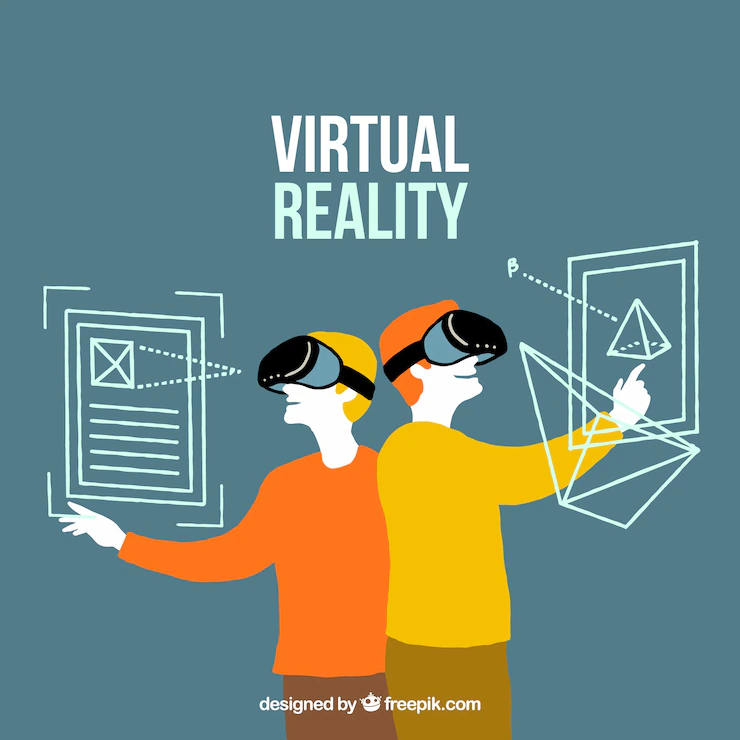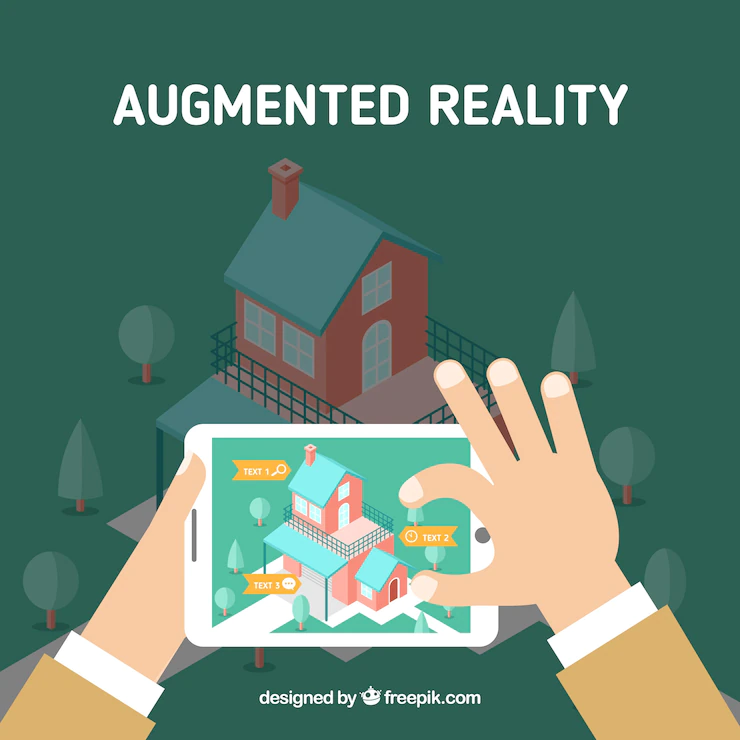
Modern technology is an essential part of almost every software and hardware company, so there is no escaping augmented reality and virtual reality, concepts that could perhaps be confusing, so today we will tell you about the main differences despite their similarities.
Basically, virtual reality can create new, completely non-existent worlds, while augmented reality offers a combination of existing elements with non-existent elements. Want to know more? Stay until the end to discover in detail how each works.

What is virtual reality?
Virtual reality or VR is a completely immersive type of technology that is changing the world, which means that it can deceive the senses to make you believe that you are in a different environment from the real one, using screens or headsets over the head, so that you can experience places with images and sounds different from the real one.
These images and sounds are generated by a computer, and have movement through haptic controllers that allow the user to be immersed in the virtual environment, with the ability to move and even perception of sensations. Special controllers can be connected to the computer, a video game console and smartphones. You can use virtual reality to:
- Create realities for video games or movies
- Develop projects virtually to visualize them before bringing them into the real world.
- Enable training in the virtual environment, before physically arriving on the job, such as flight simulators for pilots.

Virtual reality allows you to immerse yourself, to get inside an artificial environment and enjoy a complete sensory experience, unrelated to what exists on the outside. Virtual reality glasses have a screen that is mounted in front of your eyes, you can synchronize them with your smartphone, video game console or computer to load and move the visual environment.
These glasses cover the eyes in their entirety, so you can only see what is on the screen, they also integrate sensors that recognize the movement in the head, so that every time you turn in the real world, you do it also within the virtual reality, and the experience becomes even more immersive when using headphones that will allow you to know the direction of the sounds within the VR world.
What is augmented reality?
Augmented reality or AR is a complement to the real environment that makes use of digital objects, that is, you will be able to see everything that is around you, but the equipment in front of your eyes adds on this real environment, objects and animations that are not there.
It is a very useful system for decorations, for example, to know how a piece of furniture would look in a room, and it is the principle applied to Pokémon Go, so that you can walk through the streets of the city capturing through your cell phone some Pokémon that technically are not in the street.

This is how augmented reality mixes digital information with real elements, always keeping the real world as the center of information, adding digital details, improving perception and complementing the environment.
In augmented reality there are also special glasses, such as Google Glass, transparent glasses that will allow you to see what is around you and show information superimposed on the objects you are looking at. This technology can also be used in cell phones, through the camera to digitally process what you are looking at in your real environment.
What is mixed reality?
Mixed reality is a concept that cannot be left out when talking about virtual reality and augmented reality, as it is a technology that combines elements of both, to give life to an interactive experience even more immersive and realistic. In mixed reality, real-world objects coexist with virtual objects and are integrated in real time like perfect pieces of a puzzle.
It is also called hybrid reality, and allows to mix real and virtual objects and people to create interactions in digital and real universes that allow to integrate absolutely all the elements.
Differences between Augmented Reality and Virtual Reality
Both technologies offer enhanced experiences for entertainment purposes; they are no longer science fiction worlds but artificial worlds that have life and can be controlled by the user, capturing deeper layers of interaction.
More and more technology entrepreneurs are investing in both options, to develop, improve and launch more products and applications, each with enormous potential, applicable to various areas, including medicine, bringing to the table the possibility of performing remote operations. But how do they differ?
Augmented reality can enhance experiences by adding a series of digital components, such as images, sounds, sensations; it is an interactive layer on top of reality, while virtual reality is a completely new world, generated by a computer and is independent of the real world.
The devices also vary somewhat; virtual reality is used through a controller that goes over the head, to connect people to the new virtual world and navigate and act in that environment or simulation; while augmented reality is easier to use from the mobile or a computer, to cross real images with digital information.
Is there a battle between augmented reality and virtual reality?
There is really no battle or competition between the two technologies, as they do not really operate independently, but complement or combine to give the user a better, much more immersive experience.
Both represent the human desire to dive into other worlds and explore other environments for entertainment and gaming purposes, or simply to cross a boundary in the dimension of the interaction of the real and the digital. No matter if they are mixed or separate, both represent the opening to new worlds.
At Alpha Solutions we know that the boundary between the real world and the virtual world continues to divide, giving rise to experiences that until recently were only possible in science fiction movies, so we always seek to be carriers of information to clarify the doubts that these new technologies generate, because at the end of the day they are increasingly integrated into the daily routines of human beings, either for entertainment or for work.
Related Posts
Los hacks de los freelancers más productivos
Hicimos una investigación para contarte los hacks más efectivos que aplican los freelancers de alto…
The Secret to Success: Top Hacks of Supercharged Freelancers
If you want to start this 2025 on the right foot in the world of…
¿Pueden los nómadas digitales hacer voluntariado?
La vida de los nómadas digitales ofrece muchos beneficios, además de la flexibilidad de horarios…
Can digital nomads volunteer?
Today we will tell you everything you need to know about digital nomads and how…








 test
test
